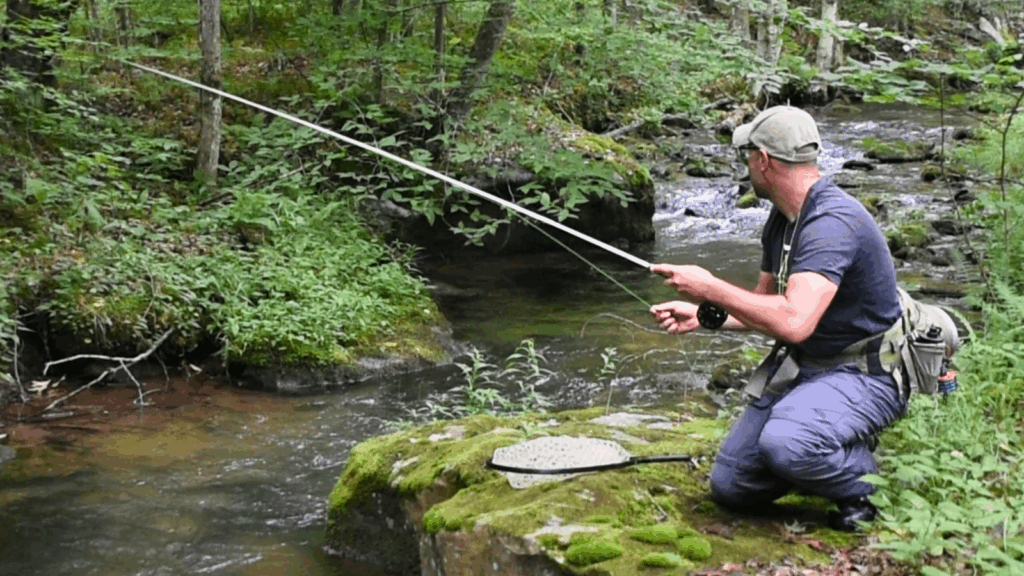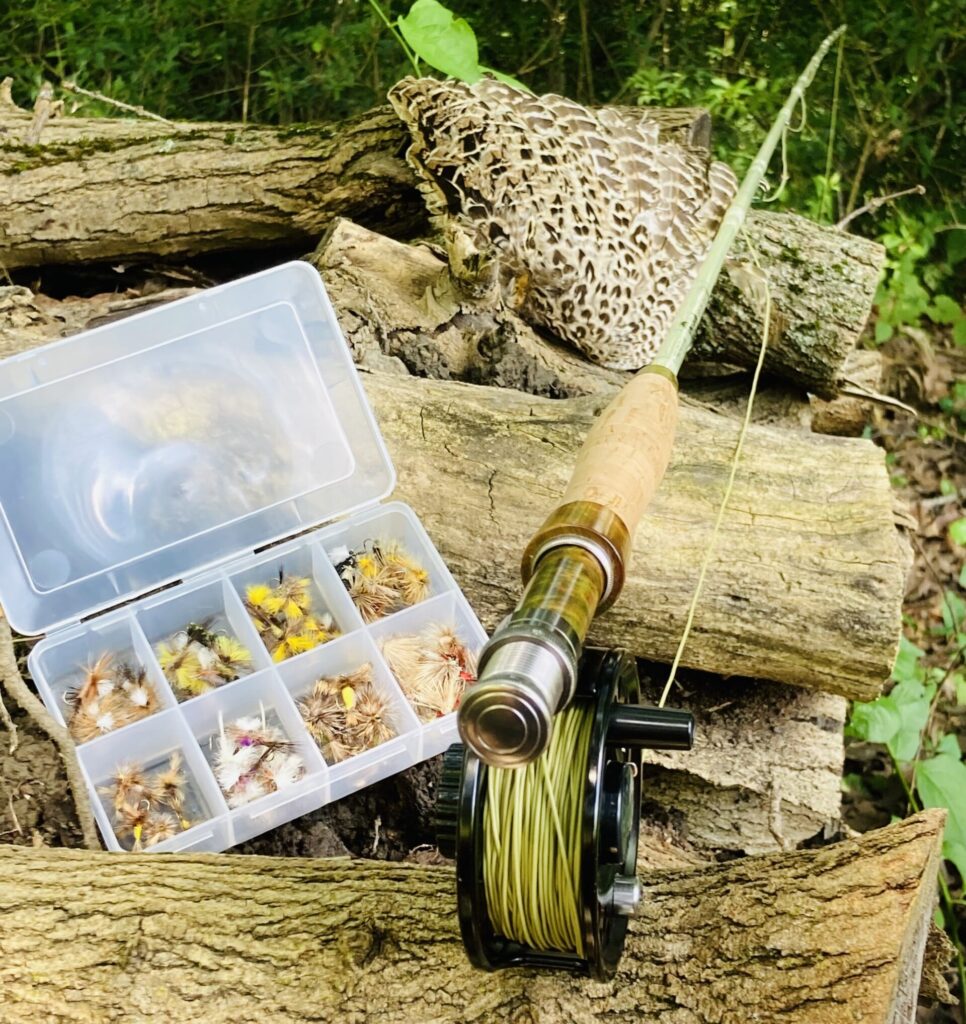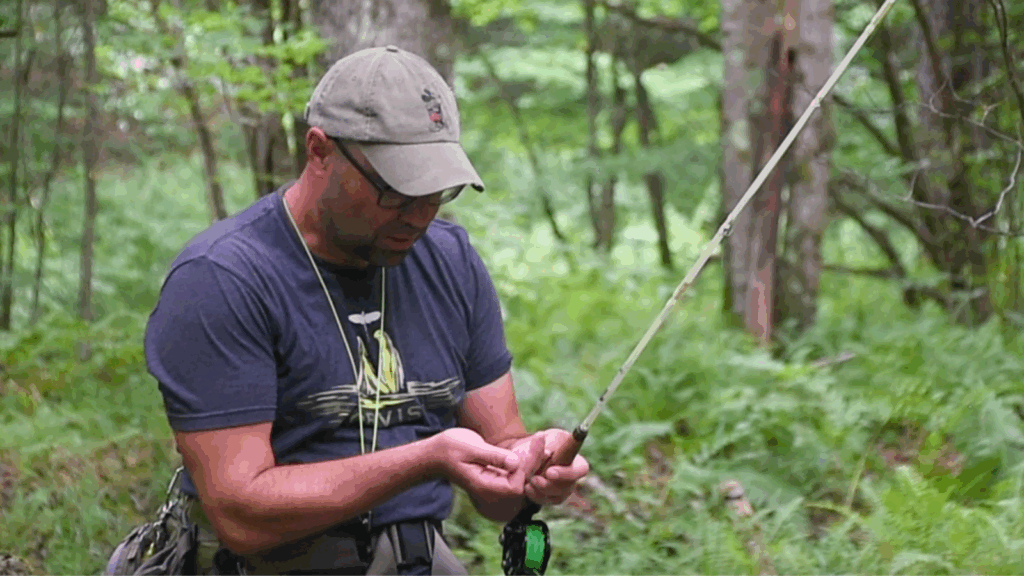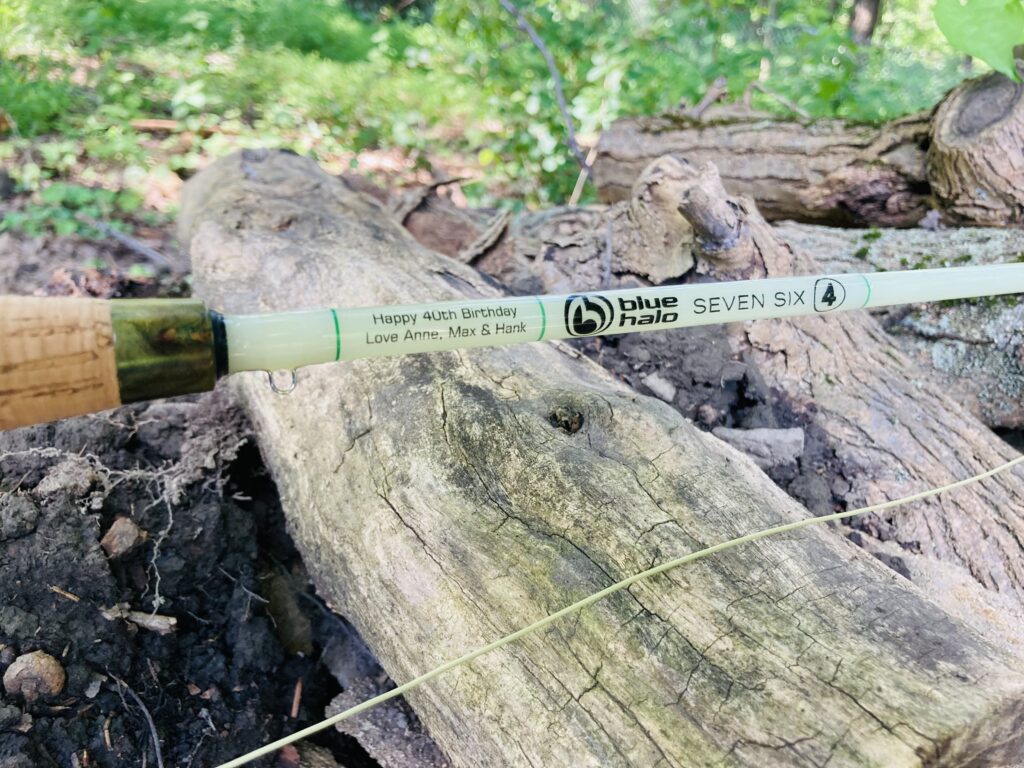Fishing Fiberglass Rods for Small Stream Trout

I waded through chest-high goldenrod and laurel toward a favorite brook trout stream in northcentral Pennsylvania and paused beside a shallow riffle. Just upstream, a small three-foot pocket formed between mossy sandstone boulders and a decaying log looked promising. Overhanging hemlocks shaded the spot, while behind me, weeds threatened my back cast. I had one chance to land a dry fly without spooking a fish or snagging brush.
Kneeling in the cool water, I made a short, precise flip cast, dropping a tan parachute fly perfectly into the pocket. Instantly, a flash and splash signaled a strike. Seconds later, I brought a vibrant 8-inch native brook trout to net. This moment captured the thrill of dry fly fishing small streams, best approached with a short, light fiberglass rod.
Fiberglass rod technology has evolved over the decades. The fiberglass rods manufactured today are much more complicated, stronger, lighter, and more sensitive than those of 75 years ago. I’ve even read of saltwater anglers using fiberglass to land fish that weigh hundreds of pounds!
And while that shows how versatile fiberglass rods have become, I use them primarily for dry fly fishing for trout in small- to medium-sized streams. For me, there’s nothing better than prowling a small stream with a fiberglass rod and a dry fly, casting to wary native and wild trout. Whether you’re a new or experienced angler, here are a few reasons why you should consider a fiberglass rod for your next small stream adventure, too.
Forgiveness: Casting and Tippet Protection
Fiberglass rods can be great teachers because casting them effectively forces you to slow down and feel what the rod is doing. One of the main problems many new fly anglers experience is not being able to feel the rod load while casting. They have a tendency to cast using more arm motion to compensate, rather than letting the rod do the work.
Fiberglass rods require a slower casting stroke due to their deeply flexing, flexible fibers. Energy transfer from butt to tip takes longer, encouraging anglers to pause and feel the rod load. This slower rhythm improves casting mechanics and creates wide, forgiving loops, reducing errors, which makes them ideal for both beginners and veterans.
Glass rods also shine in tippet protection. Ever snapped a fly on the hookset or lost a trout in a sudden run? Fiberglass bends deeply, sometimes into a full U-shape, absorbing head shakes and surges. This built-in cushion acts like a secondary drag system, reducing stress on light tippet and helping you land more fish without break-offs.

Accurate and Delicate Presentations
Among my favorite places to fish is a short, public section of a small Pennsylvania limestone creek. This stretch is best known for shallow, skinny riffles, fishy bank water, small runs, and plenty of pockets. The banks are choked with weeds and brush, and low limbs span the creek corridor overhead. The exclusively wild trout are small, ten inches or less. But they’re pressured wild brown trout, so despite their size, they’re cagey and challenging to fool.
On this waterway, when fishing a dry-dropper rig or searching the skinny stuff with a #14 X-Caddis, the fiberglass fly rod is a great choice.
Fiberglass requires little to no fly line out of the tip-top to load. So making short casts in tight quarters is an absolute dream and a shining point of these tools. And when needing to reach out a bit further to that rising fish, 15–30 feet out, the slow casting stroke and line speed allow the angler to not only lay that fly delicately on the surface, but place it on the face of a dime!
Additionally, skills such as roll casting, bow-and-arrow casting, frisbee casting, and short line mends (both in the air and on the water) happen effortlessly with a flexible, slower-action fiberglass rod.
A major disadvantage of that slow fiberglass casting stroke, however, is also a very slow pickup speed. This is why fishing dry flies or indicator nymphing at distance is not best achieved with glass. First, when managing 50–60 feet of line over a long dry fly drift, long on-the-water mends will be required. The glass rod struggles to generate enough power and speed to pick up and control the line due to its slower action. That’s not to say that it can’t be done, but in these instances, a fast-action graphite rod might be a better option.
Likewise, when a trout eats a nymph or dry fly at distance, power is needed to transfer energy and pick up that much line to set the hook. Slow-action rods of any kind are not good choices for big water where long presentations and lots of line on the water are necessary. The delay in seeing the take and setting the hook can cause a higher percentage of misses to hookups. In truth, though, that can also be the case with any rod, even fast-action graphite options. The best way to increase your catch ratio is move closer to the fish without spooking it and simply make a shorter, more accurate presentation.

Double Taper Versus Weight Forward Fly Lines for Fiberglass Rods
I fish a 7 ½-foot 4-weight fiberglass rod made from Blue Halo’s RetroFlex 3 Glass blanks. This small stream rod handles beautifully when fishing dry flies and dry-dropper rigs. It’s supple and sensitive, providing outstanding responsiveness and control. Blue Halo offers a double taper fly line that pairs beautifully with their rods. I own one and fish it routinely, and I’d recommend it to any fiberglass enthusiast. Other manufacturers also produce lines that are specific to their line of rods. Nevertheless, my rod performs no better with this double taper fly line than other quality double taper fly lines from Orvis, Scientific Anglers, or Rio.
That said, I prefer double taper (DT) for most small stream situations where typical casts will be 10-25 feet on average. Another reason I like the double taper is because, if the business end of the fly line wears out, I can simply remove it from the reel, flip it around, and reload it. The life of the line is effectively doubled.
Weight forward (WF) lines can be a great option for fiberglass rods, though. On larger waters where a longer cast is needed, a weight-forward line performs much better. A weight-forward line will reduce the impact of wind on your casting loop and allow you to deliver dry flies more accurately at longer distances as well.
The best way to decide which fly line is right for your fiberglass rod is to visit your local fly shop and cast a DT and WF and compare how they feel side by side. In the right hands, and with the right line set up, a modern fiberglass rod can do almost everything that a modern graphite rod can do.
Durability and Affordability
Thanks to their inherent flexibility, fiberglass rods are harder to break. They can bend further, longer, and under more pressure than graphite rods while maintaining their integrity. A quick internet or YouTube search will turn up dozens of clips of someone bending a fiberglass blank 180 degrees from tip to butt. (You won’t find a video of me doing this with my favorite rod, though!)
While I can’t confirm this based on materials science, my anecdotal observations and experience tell me that fiberglass can take more abuse than graphite. Fiberglass blanks can handle more bangs, bumps, drops, nicks, and gouges and still maintain their strength. Of course, they’re not indestructible. Fiberglass rods can still break from accidents or misuse, but in my opinion, it takes more to break one compared to graphite.
Fiberglass fly rods are also genrally more affordable. Search the big-name brands, and you’ll see that their top-end graphite rods often exceed $1,000. And if you’re considering a new custom bamboo rod, be ready to take out a second mortgage. But do that same search for fiberglass rods, and you’ll find that high-end offerings cost roughly half as much, even within the same brand.
Although fiberglass rod technology has improved drastically over the years, they are still in much lower demand than graphite or carbon fiber. There’s a reason, for example, why Orvis doesn’t dedicate multiple catalog pages to the Superfine Glass rods like they do for their Helios graphite series, backed by extensive R&D and advertising. Fiberglass is simply less expensive to produce and, in my opinion, the lower demand is the biggest factor that makes them still reasonably priced.

More Fun on Small Fish…and Custom Colors
At the core of my fly fishing passion is exploring small streams for average-sized wild trout. Don’t get me wrong, I love catching big fish, on any water. But no pursuit gives me more joy than scrambling along an isolated backcountry stream, picking it apart piece by piece with a buggy dry fly or a single nymph. And when that monster 9-inch brookie materializes out of nowhere, darts to the surface, and hammers the Parachute Adams, playing that fish on a glass rod is going to be a hell of a lot more fun.
Even small trout will bend a glass rod way over, making it flex, shimmy, and dance in your hand—bringing a grin to your face. I call this feeling the “glass giggles.” Nothing is more fun than playing average or small trout on a fiberglass fly rod. It’s pure joy. And if you’re lucky enough to hook a big fish on a fiberglass rod, hold on, because you’re in for a wild ride!
Side note about targeting bigger fish and using bigger flies with glass: fiberglass rods are heavier than high-end graphite rods. When fishing shorter, lighter line weight fiberglass rods, this weight difference is negligible. However, in longer lengths and heavier line weights, fiberglass rods are noticeably heavier. Keep this in mind when reaching for that 9’ 7-weight glass rod if you hope to land a monster trout or even probe your favorite smallmouth creek. While it’s a blast to catch smallies on glass, an angler will become fatigued more quickly.
A super cool bonus of fiberglass is that they can be made in just about every color in the white light spectrum. Thanks to their natural translucence, they practically glow in the sunlight – like Luke Skywalker’s lightsaber.
My Blue Halo rod is the “Raw” color: natural glass. In the sun, depending on the background, it shimmers in greens, blues, and yellows. It’s beautiful. Many other glass rod companies also offer products in various colors from earthy tones to vibrant shades. Whether you want to go loud and proud or stay subtle and sneaky, there’s a color of glass out there to match your personality.
The Joy of Fiberglass
Fiberglass fly rods are not the best choice for every fishing situation, but then again, no fly rod is, not even high-end graphite or carbon fiber rods. Although fiberglass rods can be purchased to suit every need, I am particularly fond of using them for fishing small streams for wild and native trout.
For anglers like me who find joy in the subtle, deliberate rhythm of small stream fly fishing, fiberglass rods offer a uniquely rewarding experience. Their forgiving action, superior tippet protection, and uncanny ability to load with minimal line out make them perfectly suited for delicate, accurate presentations in tight quarters.
While they may not excel in every situation, fiberglass rods shine where stealth, precision, and finesse matter most. Add in their durability, affordability, and vibrant aesthetics, and fiberglass rods not only fill a practical niche, but bring a whole lot of fun to the pursuit of trout anywhere they are found.
Have a fly fishing question you’d like answered? Drop us a line at info@darkskskiesflyfishing.com! If we use your question in a blog post or in the newsletter, we’ll send you a FREE fly box with a dozen of our favorite nymphs and dry flies!
Did You Enjoy This Article?
Stay up to date with the Dark Skies Fly Fishing monthly newsletter for free and receive the latest posts in fly fishing news, tricks, tips, and techniques, stream reports, as well as updates on new flies added to the Online Store and exclusive discounts!
Sign Up Now
